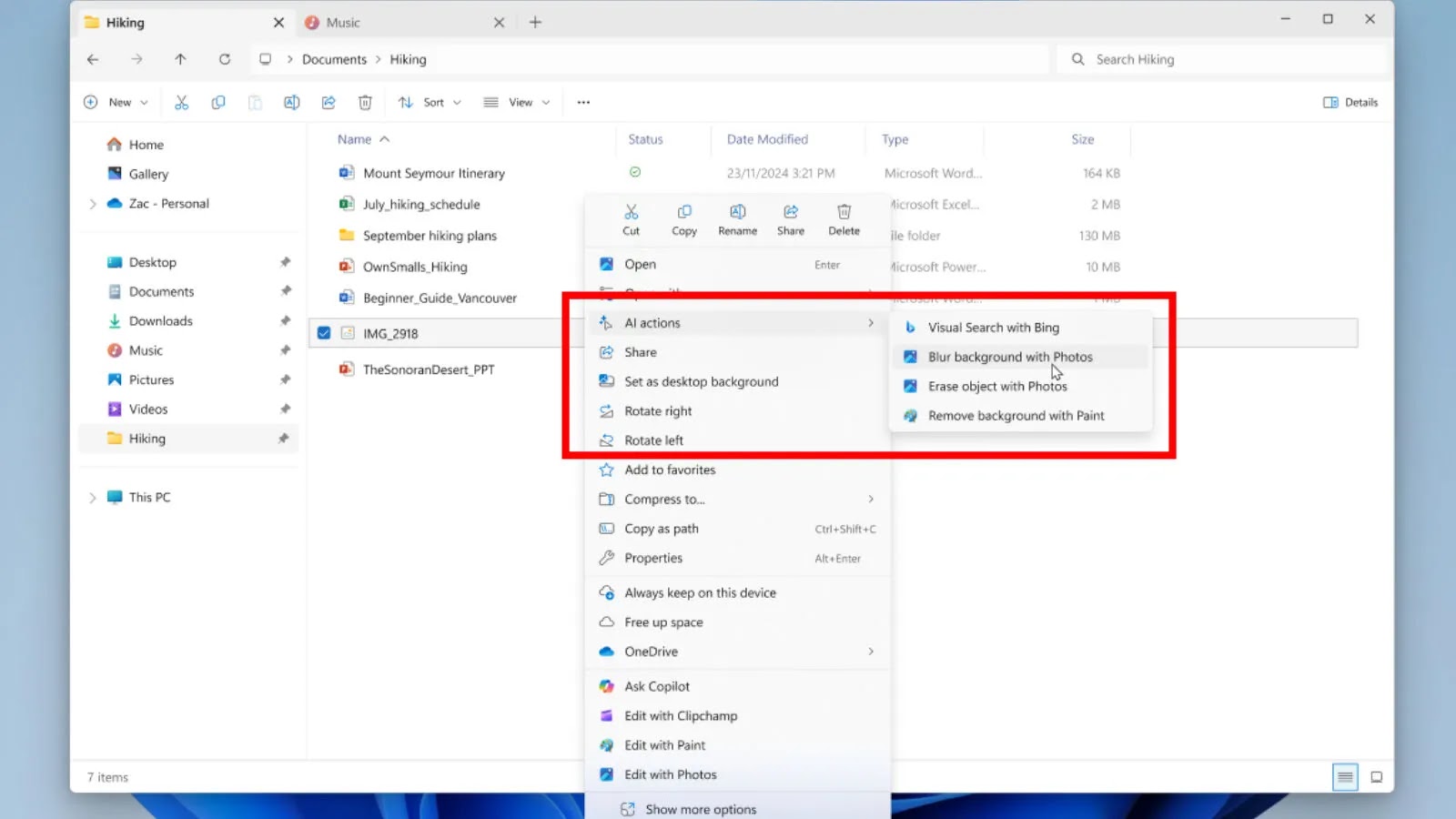
Microsoft To Introduce New AI Actions In Windows File Explorer
Microsoft Integrates AI: A New Era for Windows File Explorer Productivity
The digital landscape consistently seeks efficiency and innovation. Microsoft, a perennial leader in operating system development, is poised to deliver a significant leap forward in user experience. Soon, Windows users will witness the seamless integration of sophisticated Artificial Intelligence capabilities directly within a familiar and foundational tool: File Explorer. This strategic enhancement promises to transform everyday computing tasks, streamlining workflows and redefining productivity for millions.
AI Actions in File Explorer: A Productivity Revolution
The impending feature, aptly named “AI actions in File Explorer,” represents a pivotal shift in how users interact with their digital files. Traditionally, performing tasks like editing an image or summarizing a document necessitated opening dedicated applications, leading to context switching and fragmented workflows. Microsoft’s new initiative aims to abolish this inefficiency by embedding powerful AI functionalities directly into the right-click context menu within File Explorer.
Imagine the convenience: a simple right-click on an image file could bring up AI-powered editing options, allowing for quick adjustments without launching a robust photo editor. Similarly, interacting with a document could instantly offer AI-driven summarization, providing a concise overview without opening a word processor. This integration not only saves time but also fosters a more intuitive and fluid computing experience.
The Mechanics of Integration: Streamlining Workflow
The beauty of “AI actions in File Explorer” lies in its unassuming yet profound impact on workflow. By leveraging Artificial Intelligence for common tasks, users can remain within the File Explorer environment, maintaining focus and minimizing disruptions. This design philosophy aligns with modern principles of user interface (UI) and user experience (UX) design, where reducing friction and cognitive load are paramount.
Key expected capabilities, as indicated by initial reports, include:
- Image Editing: AI-powered tools for quick edits directly from File Explorer.
- Document Summarization: The ability to generate concise summaries of documents with a right-click.
- Enhanced Search and Organization: While not explicitly stated as initial features, the foundation for more intelligent file search, tagging, and organization based on content analysis is highly probable given AI’s capabilities.
This approach democratizes AI, making its powerful capabilities accessible to a broader user base without requiring specialized knowledge or complex software installations.
Security Implications and Considerations
As with any significant software integration, especially one involving AI and data processing, cybersecurity implications warrant careful consideration. While the primary focus of “AI actions in File Explorer” is productivity, the underlying mechanisms for processing data (e.g., images, documents) locally or via cloud services will be critical for user privacy and security. Microsoft has a strong track record of prioritizing security in its new features, and it is expected that robust data handling protocols will be in place.
Potential areas for scrutiny by security professionals will include:
- Data Handling: How are the files processed? Are they uploaded to Microsoft’s cloud services for AI analysis, or is the processing done on-device?
- Privacy Controls: What granular controls will users have over how their data is used by these AI features?
- Update Mechanisms: How will the AI models be updated, and what security measures are in place to prevent malicious model injection?
It is important for users to remain vigilant and ensure their systems are always updated with the latest security patches to mitigate any potential vulnerabilities that may arise. While no specific CVEs are associated with this feature at the time of writing, general best practices for software update management remain critical. For instance, staying informed about broad Windows security updates like those addressing CVE-2023-xxxx (an example placeholder for future vulnerability, as none exist for this unreleased feature) is always prudent.
Looking Ahead: The Future of Windows Productivity
The introduction of AI actions in Windows File Explorer signals a broader strategy by Microsoft to infuse artificial intelligence into the core user experience. This move is not merely an incremental update; it represents a foundational shift towards more intelligent and context-aware computing. As AI capabilities continue to evolve, we can anticipate even more sophisticated integrations that will further blur the lines between traditional applications and operating system functionalities.
This development underscores a significant trend in responsible AI deployment: making powerful tools accessible and practical for everyday users, ultimately enhancing efficiency and fostering innovation across various sectors.
Conclusion
Microsoft’s forthcoming integration of AI actions within Windows File Explorer marks a significant milestone in user productivity and system intelligence. By enabling tasks like image editing and document summarization directly from a right-click, the company is poised to redefine workflow efficiency, minimize context switching, and make advanced AI capabilities readily available to a vast user base. As cybersecurity professionals, we will monitor the implementation to ensure data privacy and security remain paramount, but the benefits to end-user experience are undeniable and truly exciting.





